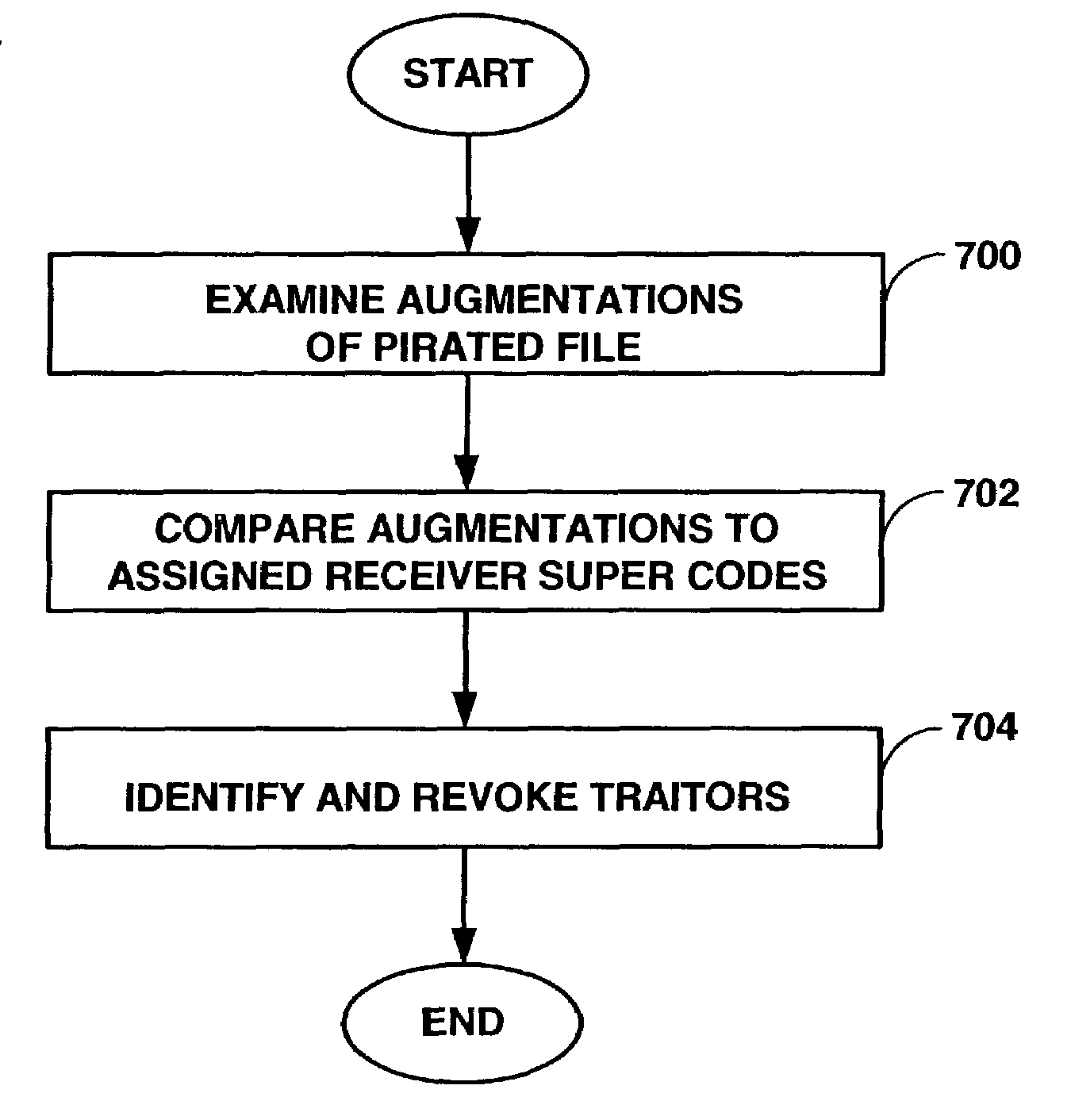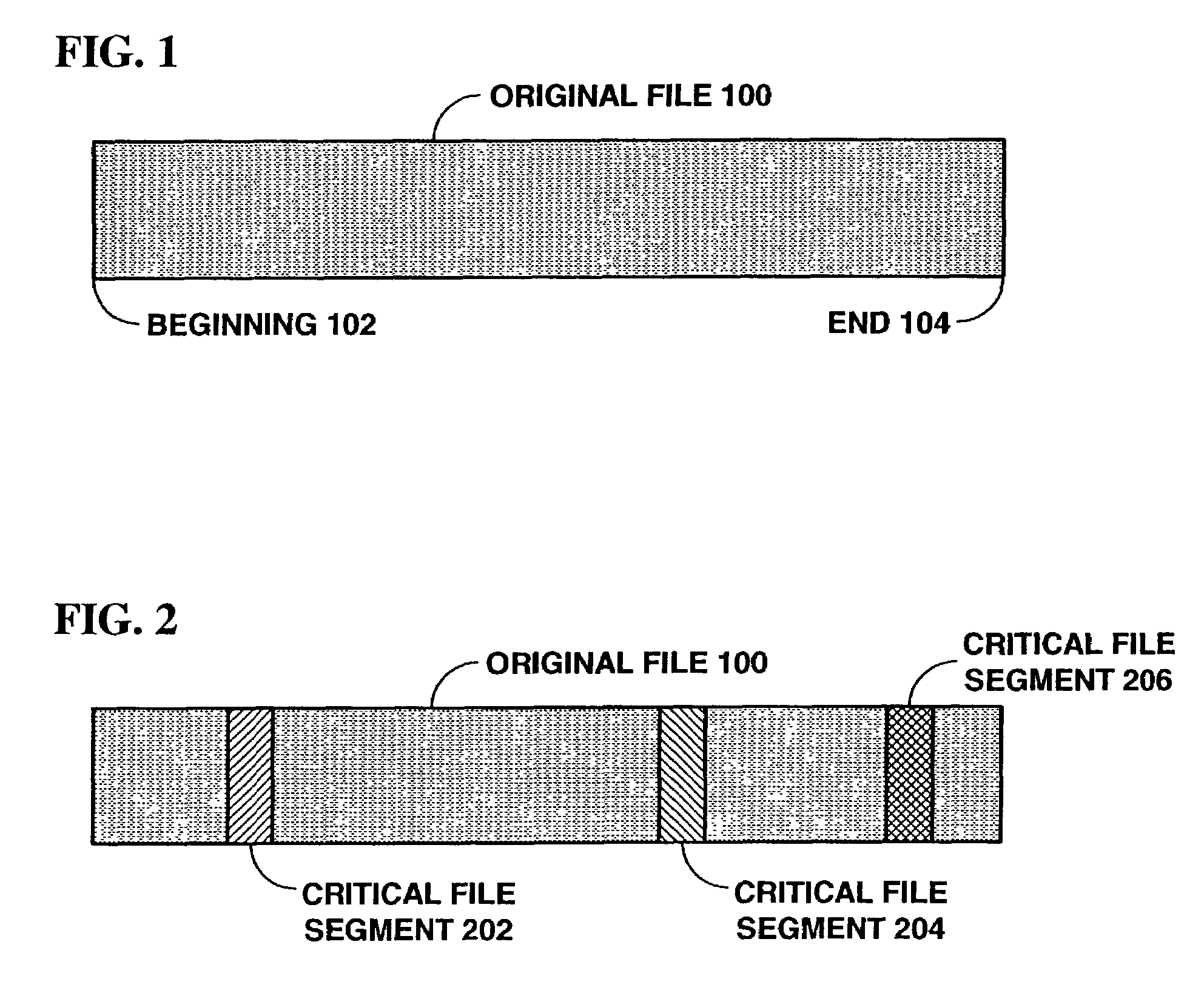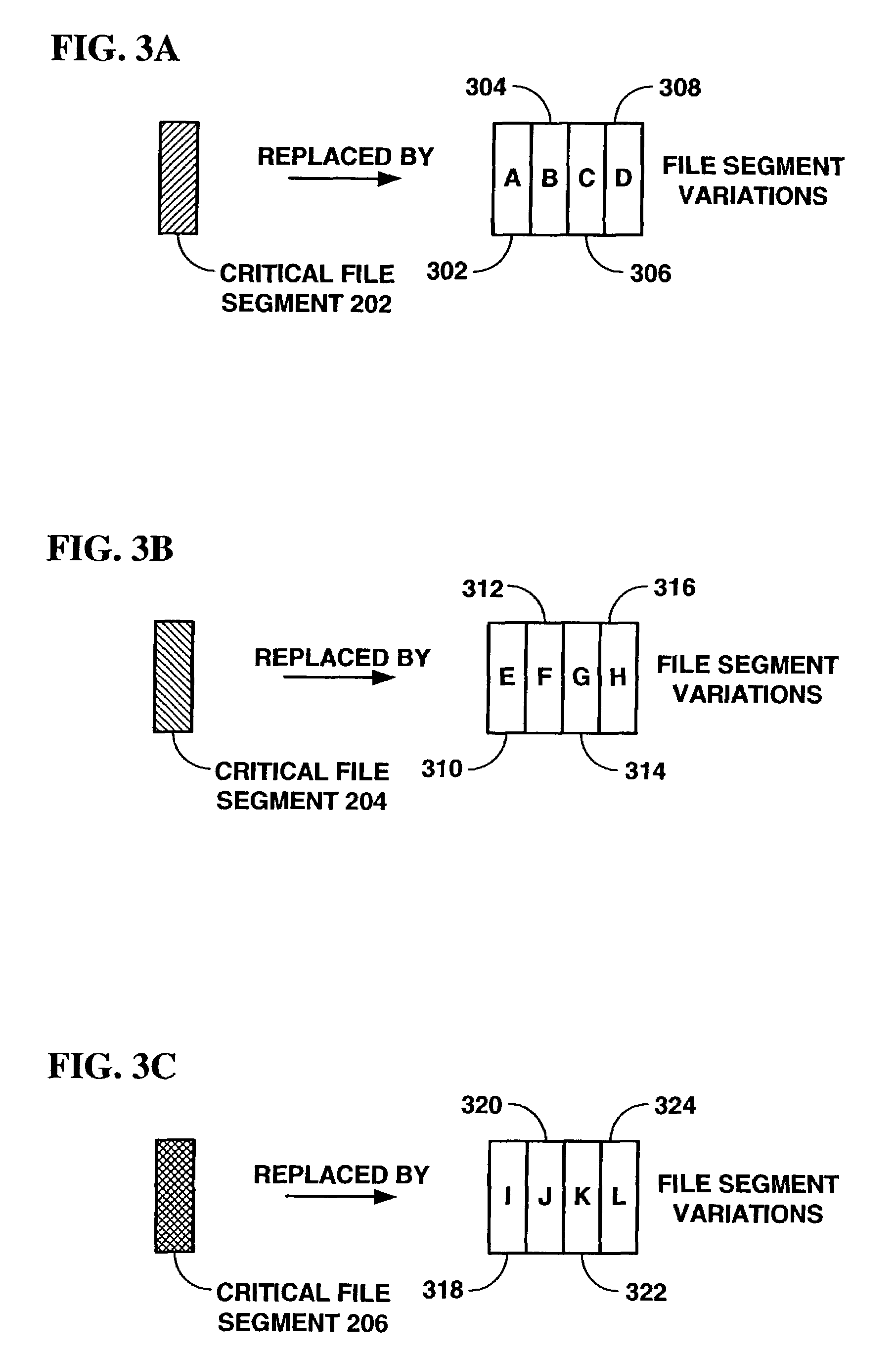Method for tracing traitors and preventing piracy of digital content in a broadcast encryption system
a technology of broadcast encryption and traitor tracking, applied in the field of preventing piracy of digital content in the broadcast encryption system, can solve the problems of piracy, major concern of content providers, and inability to solve, and achieve the effect of making the situation even easier
- Summary
- Abstract
- Description
- Claims
- Application Information
AI Technical Summary
Benefits of technology
Problems solved by technology
Method used
Image
Examples
Embodiment Construction
[0033]Referring now to FIG. 1, a diagram of an original file 100 is shown, according to an embodiment of the present invention. Files may comprise any kind of digital data sequence, including but not limited to text, audio, images, video, music, movies, multimedia presentations, operating systems, software applications, and cryptographic keys. In broad terms, file 100 includes a beginning 102 and an end 104 and a span of data. Files 100 may be of any size and may be distributed by any means, including but not limited to computer networks, satellite networks, cable networks, television transmissions, and various physical storage media (e.g. CD-ROMs, DVDs, tapes, etc.) as are known in the art. Files 100 may be broadcast in groups in a substantially continuous sequence, for example, when a movie rental box's stored content of say 255 movies is updated, perhaps on a monthly basis. In the movie rental box scenario, among others, files are usually not encrypted and otherwise processed on ...
PUM
| Property | Measurement | Unit |
|---|---|---|
| real time | aaaaa | aaaaa |
| transmission bandwidth | aaaaa | aaaaa |
| time | aaaaa | aaaaa |
Abstract
Description
Claims
Application Information
 Login to View More
Login to View More - R&D
- Intellectual Property
- Life Sciences
- Materials
- Tech Scout
- Unparalleled Data Quality
- Higher Quality Content
- 60% Fewer Hallucinations
Browse by: Latest US Patents, China's latest patents, Technical Efficacy Thesaurus, Application Domain, Technology Topic, Popular Technical Reports.
© 2025 PatSnap. All rights reserved.Legal|Privacy policy|Modern Slavery Act Transparency Statement|Sitemap|About US| Contact US: help@patsnap.com



